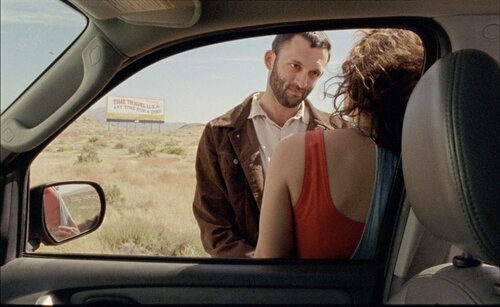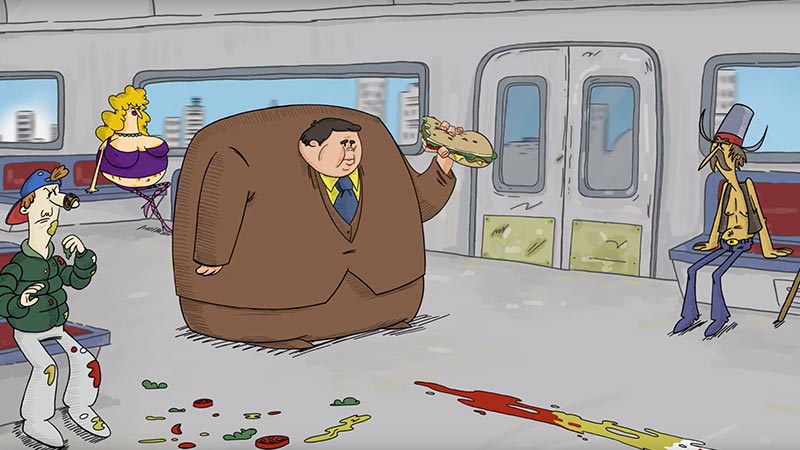When Aidan’s work forces him to cut short a getaway with Bess, their unsteady relationship seems headed for an end as abrupt as their road trip’s, but an empty gas tank and insistent billboards for Time Travel USA (World Famous!) lead them to an experience unlike than any adventure they could have planned.
Together they are transported to the End of the World, an alien landscape where they find a moment of peace, until they are returned to a highway junction where they can make the choice to fill up the tank and be ready to face the rest of the journey ahead.
This journey from the everyday to the extraordinary and back again offers a glimpse of the beyond and the chance to make something of it in the present.
Film Shortage is delighted to catch up with director Talia Shea Levin.
What’s the inspiration behind this story?
Filmmaking to me is a call to adventure, and road trips are one of my favorite kinds. After however many hundreds of miles it seems like it’d be so easy to slip into the surreal just around the bend, or at the next exit. I wondered what would happen if one of those middle-of-nowhere billboards selling attractions full of dinosaurs or other mysteries turned out not to be false advertising at all, but a real portal to a somewhere beyond. What sort of people would deserve a sudden split from the reality of present time and space the most? A mismatched couple connected only by a silent battle over who can care the least seemed like good candidates. I thought maybe if they were forced to face the end of the world they would find a way to confront their own feigned apathy and each other, too.

Time travel stories usually get quite complex pretty quickly, how did you keep your composure in this one?
Part of it is that my love for sci-fi is large but my budget and run-time were small, so as cool as explosions and temporal pincer moves are, my main focus in NEXT TIME was the characters, and their relationship to each other and their environment. I wanted time travel to feel like an almost natural extension of this environment and the slight time dilation that can already occur on an extended road trip. We experience the sublime more often in our lives than we realize, and then we just do our best to metabolize it into the everyday. Some people will pull the car over to watch a stunning sunset before continuing on home, Bess and Aidan happen across the last sunset on Earth instead.
With 16mm film, too, there’s a texture, an imperfection to the image that distances it from reality, so right from the start it’s a little easier to accept that anything is possible.

Take us to the future, what are those creatures?
H.G. Wells’ Time Traveller is terrorized by “slow-stirring” “monstrous crab-like creature (s)” with “complicated mouths” and that vision, along with the haunting work of Swedish artist Simon Stålenhag, and google image hunts for the toughest, most alien crabs among us (red frog spanner crabs win) were the main sources of inspiration. I don’t think whatever survives beyond humankind would necessarily be a monster, though, just a gentle overgrown survivor, a lonely evolutionary victor carved by time and a landscape toxic to every other lifeform, looking for morsels of food as the sun dies out.



